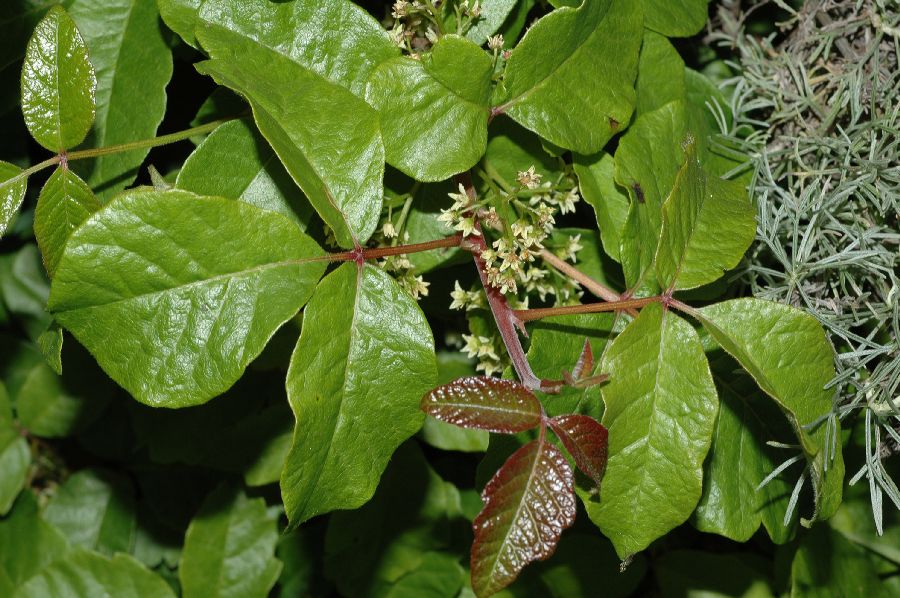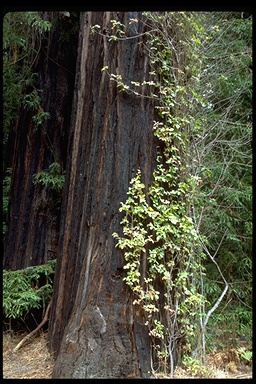Interactions
With
Humans…
The most obvious interaction with the poison oak is with humans. Their poison, urushiol, causes a reaction in the skin causing a rash in most people. The urushiol causes an allergic reaction on the skin which basically causes our immune cells to generate a response causing the rash and sometimes in rare cases where a patient is extremely allergic painful blisters. To see more about urushiol and humans see Toxicology.
Other
Plants…
The poison oak has many interactions with other plants. Since in the presence of support it turns into a vine, many trees act as the vine's support. Some examples of this are any tree present in the environment of the poison oak. Some other web pages done on multipleorganisms.net that are part of the poison oak's environment are the Silver Maple, White Willow, and Coastal Douglas-Fir. In addition to growing with trees it can also grow along other vines such as those of the grape.
Jo-Ann Ordano © California
Animals…
As mentioned earlier the poison oak also plays an important role in the lives of other organisms. Since it is the most common shrub in California many organism use the poison oak for shelter or food. Poison oak is a main food source for the Black-tailed deer in regions of California. Along with the deer domestic animals such as horses, goats, cows, and sheep also use poison oak as a primary source for food. The berries produced by the poison oak also serve as food for various birds in the region such as the California Towhee, the Yellow-rumped Warbler, and the Western Bluebird. These birds also use poison oak as potential nest sites as it offers great protection from humans.



